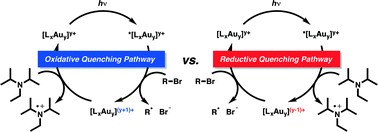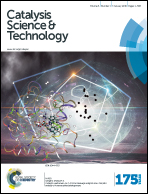Polynuclear gold(i) complexes in photoredox catalysis: understanding their reactivity through characterization and kinetic analysis†
Abstract
The light mediated reduction of unactivated carbon–halogen bonds using polynuclear gold(I) complexes provides a mild and temporally controlled route to the generation of C–H, and C–C bonds. Through complete photophysical and electrochemical charaterization of a series of gold(I) complexes we have been able to achieve a more intimate understanding of the complexities surrounding the excited state processes and mechanism which underly these transformations, allowing for, and facilitating further and future optimizations and applications.


 Please wait while we load your content...
Please wait while we load your content...